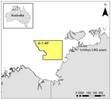 Both Gabon and the Democratic Republic of Congo (DRC) in Kinshasa are rejecting Angola's proposed changes to the maritime borders, in which Angola seeks to increase its continental shelf length by more than 200mi.
Both Gabon and the Democratic Republic of Congo (DRC) in Kinshasa are rejecting Angola's proposed changes to the maritime borders, in which Angola seeks to increase its continental shelf length by more than 200mi.
Gabon and the DRC have written to United Nations secretary-general Ban Ki-moon rejecting part of Angola’s 6 December 2013 submission to the UN Commission on the Limits of the Continental Shelf (UN-CLCS).
UN Convention
The UN Convention on the Law of the Sea (1982 UN Convention; UNCLOS) specifies that coastal countries have the right to access the high seas. Each country has a territorial sea of 12 nautical miles, a contiguous zone of a further 12nm, and an exclusive economic zone (EEZ) of 200nm. In its territorial sea, a coastal state is free to set laws, regulate use, and use any resource. In the contiguous zone, a state can enforce laws in four specific areas: customs, taxation, immigration, and pollution. In the EEZ, a coastal nation has sole exploitation rights over all natural resources.
According to Articles 5 and 7 of the 1982 UN Convention, the normal baseline, from which maritime claims are measured and median lines are constructed, is the low-water line along the coast and islands. However, where the coast is deeply indented, fringed by islands, or unstable a country may claim straight baselines linking salient points.
UNCLOS came into force in 1994, a year after the 60th nation signed.
The Democratic Republic of the Congo ratified the 1982 UN Convention on 17 February 1989. The Republic of Angola ratified on 5 December 1990. The Gabonese Republic ratified on 11 March 1998.
Gabon maritime border
In Angola's new proposition, the northern maritime limit separating Angola’s territorial waters to the north of Cabinda from Republic of Congo’s waters, instead of running straight from the coastline, turns off abruptly to the north and intersects first Congo’s continental shelf area, then Gabon’s continental shelf area.
According to the IBRU Boundary and Security Bulletin Spring 1999: Gabon claimed a 12nm territorial sea and EEZ out to a maximum of 200nm (370km), under Act No. 9 of 1984. According to Article 11 of that law, overlapping claims are to be resolved according to generally recognized principles of international law –equidistance is not mentioned.
Due to the curvature of the West African coast, part of a potential EEZ claim from Angola (Cabinda) reaches beyond Congo’s likely zone and overlaps the Gabonese EEZ. Therefore, Gabon and Angola may have to delimit a short EEZ boundary.
On 10 April 2012, Gabon filed an application to the UN-CLCS to extend its continental shelf beyond 200nm.
On 7 June 2012, Angola's Minister of Foreign Relations, Georges Rebelo Pinto Chikoti wrote to UN Secretary-General Moon, challenging Gabon's application.
On 30 August 2013, the DRC's Ministry of Foreign Affairs wrote to UN Secretary-General Moon, saying that it does not challenge Gabon's application to extend its continental shelf, but that the DRC did not yet have access to the high seas, and would continue to seek this under UNCLOS article 83, paragraph 1.
DRC maritime border
In April 2014, the Democratic Republic of Congo (DRC) in Kinshasa also contested the maritime borders proposed in Angola’s submission to the UN-CLCS. The submission gives DRC no access to the high seas. It recognises only a small triangle of sea as DRC territory and ignores any Congolese right to an exclusive economic zone (EEZ) or access to the continental shelf beyond the previous 200-mile limit (AE 264/17).
In a letter to UN secretary-general Ban Ki-moon on 11 April 2014, the DRC's foreign minister foreign minister Raymond Tshibanda said Angola’s border claim had been drawn “unilaterally” without regard for DRC’s rights to its maritime territory.
The DRC government has requested that the commission refuse to review the map, in order to allow an international tribunal to rule on the dispute. This generally refers to the International Court of Jutice in The Hague.
The UN says that Angola's submission is scheduled to be discussed by the commission during its session from 21 July to 5 September 2014.



